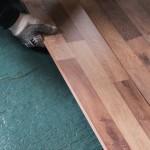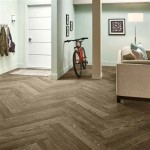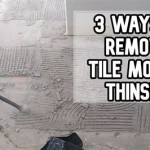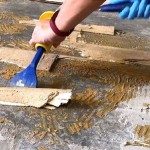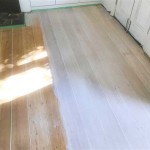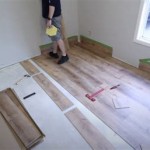How to Remove Glue from Carpet Flooring
Dealing with glue on carpet flooring is a common household issue. Whether it's a result of crafting activities, DIY projects, or accidental spills, dried or sticky glue can be a significant nuisance and potentially damage carpet fibers. This article provides detailed instructions and methods for effectively removing different types of glue from carpets, minimizing damage, and restoring the carpet's original appearance.
The success of glue removal depends on several factors, including the type of glue, the length of time it has been on the carpet, and the carpet fiber itself. Identifying these factors is crucial before proceeding with any cleaning method. Failure to do so could result in the selection of an inappropriate cleaning agent, leading to further damage or discoloration of the carpet.
Before beginning any cleaning process, it is always recommended to test the chosen cleaning solution on an inconspicuous area of the carpet. This precautionary measure helps prevent unexpected color changes or fiber damage that might occur from a reaction between the cleaning agent and the carpet material. A small, hidden corner or area under furniture is ideal for testing.
Identifying the Type of Glue
Different types of glue require different removal methods. Knowing the specific type of adhesive present on the carpet is the first and most crucial step. Common types of glue encountered in household situations include:
White Glue (School Glue): This type of glue is water-based and often easy to remove, especially when fresh. Its primary component is polyvinyl acetate (PVA), which dissolves in water.
Craft Glue: Similar to white glue but potentially containing stronger adhesive properties, craft glue might require more aggressive removal techniques.
Super Glue (Cyanoacrylate): Super glue hardens rapidly and forms a strong bond. Its removal often necessitates solvents specifically designed to break down cyanoacrylate polymers.
Construction Adhesive: This category includes adhesives used for building and home repair. They are typically very strong and may require professional cleaning services for complete removal.
Carpet Glue: Often used during carpet installation, this glue creates a robust bond with the subfloor and can be difficult to remove without damaging the fibers.
Identifying the glue type allows for selection of the appropriate solvent or method, improving the chances of successful removal while minimizing the risk of damage.
Essential Tools and Materials
Having the correct tools and materials on hand streamlines the glue removal process and prevents potentially damaging improvisation. The following list details essential items often needed for various glue removal methods:
Dull Knife or Scraper: Used to gently remove hardened glue without cutting or damaging carpet fibers. A plastic scraper is preferable to metal, as it is less likely to harm the carpet.
Vacuum Cleaner: Crucial for removing loose debris and glue fragments after scraping and before applying any cleaning solutions.
Clean White Cloths or Sponges: Essential for blotting and applying cleaning solutions. White cloths are preferred to avoid transferring dyes to the carpet.
Iron: Used in conjunction with a damp cloth to soften some types of glue for easier removal.
Hair Dryer: Provides controlled heat to soften glue without the potential damage associated with an iron.
Rubbing Alcohol (Isopropyl Alcohol): An effective solvent for many types of glue, particularly super glue and some craft glues. Test in an inconspicuous area first.
Acetone (Nail Polish Remover): Can be effective for removing super glue and certain other adhesives. However, it can damage synthetic carpet fibers, so it must be used with extreme caution and tested thoroughly beforehand.
White Vinegar: A milder solvent that can be effective for removing water-based glues.
Dish Soap: A general-purpose cleaner that can help loosen glue and dissolve residue.
Carpet Cleaning Solution: A commercial carpet cleaner designed to remove stains and residues. Ensure it is safe for the specific type of carpet being cleaned.
Gloves: Protect hands from cleaning solutions and glue residue.
Eye Protection: Protects eyes from splashes and fumes from cleaning solutions.
Gathering these tools and materials beforehand allows for a quick and efficient approach to glue removal, reducing the risk of the glue setting further or causing additional damage.
Step-by-Step Glue Removal Methods
The following methods outline the specific steps for removing different types of glue from carpet. Each method is designed to be effective while minimizing the risk of damage to the carpet fibers.
Method 1: Removing Water-Based Glues (White Glue, School Glue, Some Craft Glues)
Step 1: If the glue is still wet, blot it immediately with a clean, dry cloth. Avoid rubbing, as this will spread the glue and push it deeper into the carpet fibers.
Step 2: If the glue has dried, use a dull knife or scraper to gently break up and remove as much of the hardened glue as possible.
Step 3: Vacuum the area thoroughly to remove any loose glue fragments.
Step 4: Mix a solution of warm water and a small amount of dish soap. Dampen a clean cloth with the solution and gently blot the affected area.
Step 5: Continue blotting, working from the outside of the stain towards the center. Avoid saturating the carpet.
Step 6: Rinse the area with clean, warm water to remove any soap residue. Blot dry with a clean cloth.
Step 7: Place a clean, dry cloth over the area and weigh it down with a heavy object, such as a book. This will help absorb any remaining moisture and prevent the carpet fibers from becoming matted.
Step 8: Allow the area to air dry completely. Once dry, vacuum the carpet to restore the texture.
Method 2: Removing Super Glue (Cyanoacrylate)
Step 1: Harden the glue with ice. Placing an ice pack or a bag of ice cubes wrapped in a cloth on the glue can make it brittle and easier to remove.
Step 2: Use a dull knife or scraper to carefully break up and remove as much of the hardened glue as possible. Work slowly and gently to avoid damaging the carpet fibers.
Step 3: Vacuum the area thoroughly to remove any loose glue fragments.
Step 4: Test a small, inconspicuous area of the carpet with acetone or rubbing alcohol to ensure it does not cause discoloration or damage. If the test is successful, proceed to the next step.
Step 5: Dampen a clean cloth with acetone or rubbing alcohol and gently blot the affected area. Avoid pouring the solvent directly onto the carpet.
Step 6: Continue blotting, working from the outside of the stain towards the center. Allow the solvent to sit for a few minutes to break down the glue.
Step 7: Use a clean cloth to blot up the dissolved glue. Repeat steps 5 and 6 as needed until the glue is completely removed.
Step 8: Rinse the area thoroughly with clean, warm water to remove any solvent residue. Blot dry with a clean cloth.
Step 9: Place a clean, dry cloth over the area and weigh it down with a heavy object. Allow the area to air dry completely. Vacuum the carpet to restore the texture.
Method 3: Removing Construction Adhesive and Stubborn Glues
Construction adhesive and other stubborn glues often require a combination of heat and solvent application. This method should be approached with caution, testing all solutions in an inconspicuous area first.
Step 1: Use a hair dryer on a low setting to gently heat the glue. Avoid using an iron directly on the carpet, as this can damage the fibers. Apply heat for a few minutes to soften the adhesive.
Step 2: Use a dull knife or scraper to carefully remove as much of the softened glue as possible.
Step 3: Vacuum the area thoroughly to remove any loose glue fragments.
Step 4: Test a small, inconspicuous area of the carpet with mineral spirits or a specialized adhesive remover. Follow the manufacturer's instructions carefully. If the test is successful, proceed to the next step.
Step 5: Dampen a clean cloth with the chosen solvent and gently blot the affected area. Allow the solvent to sit for a few minutes to break down the glue.
Step 6: Use a clean cloth to blot up the dissolved glue. Repeat steps 5 and 6 as needed until the glue is completely removed.
Step 7: Rinse the area thoroughly with clean, warm water to remove any solvent residue. Blot dry with a clean cloth.
Step 8: Place a clean, dry cloth over the area and weigh it down with a heavy object. Allow the area to air dry completely. Vacuum the carpet to restore the texture.
In cases where construction adhesive or other stubborn glues persist, professional carpet cleaning services are recommended. Attempting to remove these adhesives with overly aggressive methods can result in permanent damage to the carpet.
Proper ventilation is crucial when using any solvent-based cleaning products. Open windows or use a fan to ensure adequate airflow.
Always dispose of used cloths and cleaning solutions properly, following local regulations for hazardous waste disposal if necessary.
By carefully following these methods and taking necessary precautions, it is possible to effectively remove glue from carpet flooring and restore its original appearance.

How To Remove Carpet Glue Goo Gone

How To Remove Carpet Glue From Wood Concrete Floors Ultimate Diy Guide

How To Remove Carpet Glue And Floor Adhesive View Our Tips

Removing Glue Or Adhesive From Hardwood Floors The Speckled Goat

Quick How To Remove Glued Carpet Padding Underlayment From Concrete Floor

Removing Glue Or Adhesive From Hardwood Floors The Speckled Goat

How To Remove Carpet Glue From Concrete Floor Step By Guide

How To Remove Glue From Wood Floors Pete S

How To Remove Carpet Glue From Concrete Floor Step By Guide

How To Remove Carpet Glue From Concrete 6 Simple Diy Ways
See Also

